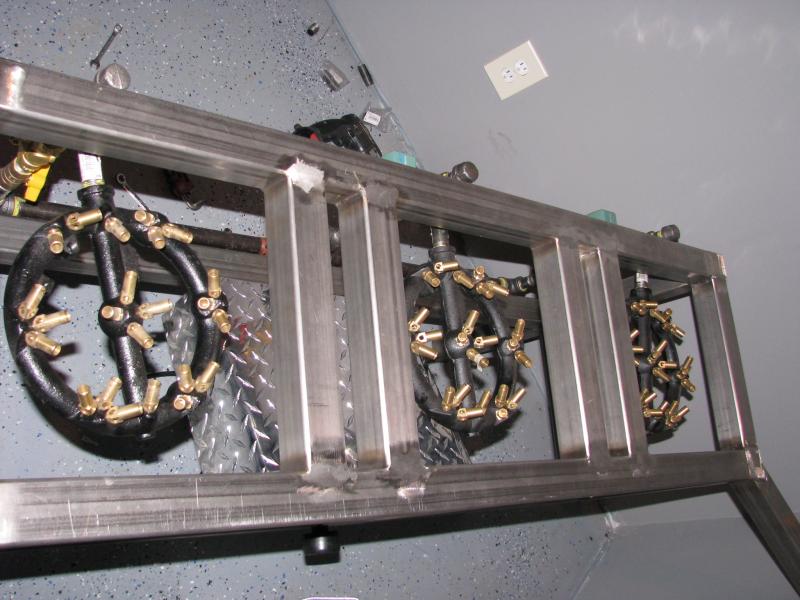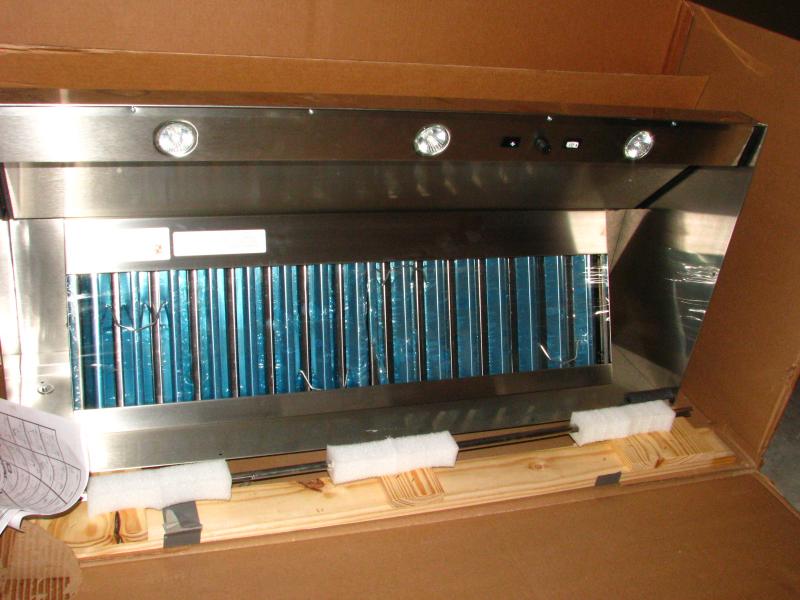EarthBound
Well-Known Member
After I'm done building my NG brewstand, I want to be able to run it on propane if I feel so inclined. What do YOU think?

I am sure that it's possible to switch between gasses. I should just be able to install/uninstall some kind of adapter for the burners. I know that there are NG adapters for propane burners, so there should be propane adapters for NG burners, right?
Also, I just want to see if anyone has done it or seen it done it before.
Thanks, Sawdustguy! I was hoping to see your reply. Are you talking about the tips, i.e., the 10 "outlets?" If so, that would make sense, but I wonder who sells them. Do you think I would have to modify the inlet of the NG ring burner with some kind of adapter that increases the pressure of the gas? If so, I wonder who sells them.
I bought tips at the same site:
https://www.cpapc.com/store/Round-Nozzle-For-Jet-Burners-P2364C244.aspx
for 79 cents each! Of course, the shipping will cost more than the parts. I bought 15, to make the shipping worthwhile, and because guys in the club keep breaking tips on the 1 barrel rig I built for club brews.
You might want to think about going with hurricane burners, since you would only have to change one orifice per burner.
Wouldn't it be easier to buy a second set of burners and just swap them out with a union fitting or some kind of quick disconnect fitting?
Wouldn't it be easier to buy a second set of burners and just swap them out with a union fitting or some kind of quick disconnect fitting?

I got my burners ($20) for my Brutus here....
http://www.asianfoodservice.com/Mer...FS&Product_Code=KECAB006&Category_Code=KECABJ
I'm in the process of building the monster in my basement to escape the Frigid MN winters. I am running natural gas and am looking for a vent that will handle these burners. Does anyone have a way to calculate the needed air exchange for these monsters. I'm thinking a vent hood with 300-400 cfm.
I am a plumbing and sprinkler engineer and have worked on quite a few projects involving boilers and domestic hot water heaters. With large loads requiring a good deal of make up air there are a lot of problems to solve. you should find out what fuel gas code your town falls under and read through the combustion air and ventilation requirements. The cfm / air change requirements are usually calculated via btu input of all gas fired equipment in the room in question (not the output). I could tell you what it would be for ny but am not in the office atm. Just make sure you do it right or you can create dangerous conditions down there. Also, remember that when you take air out of a space, it has to be made up somehow. That being said you will need a source of combustion air as well as exhaust. This can create problems when you bring in enough unheated air in the winter for your pipes to freeze. Most commercial applications have heating units devoted solely to make up air for large volume situations. Either that or all the pipes are insulated and heat traced. Anyway, all im saying is that it is a pretty big project so make sure you do the research beforehand.
Isn't the regulator requirements different for propane and NG?
I dimly remember installing a gas appliance that required me to unscrew the cap of the regulator and flip the valve inside over for propane use. So long ago that I don't really remember the details.
I am a plumbing and sprinkler engineer and have worked on quite a few projects involving boilers and domestic hot water heaters. With large loads requiring a good deal of make up air there are a lot of problems to solve. you should find out what fuel gas code your town falls under and read through the combustion air and ventilation requirements. The cfm / air change requirements are usually calculated via btu input of all gas fired equipment in the room in question (not the output). I could tell you what it would be for ny but am not in the office atm. Just make sure you do it right or you can create dangerous conditions down there. Also, remember that when you take air out of a space, it has to be made up somehow. That being said you will need a source of combustion air as well as exhaust. This can create problems when you bring in enough unheated air in the winter for your pipes to freeze. Most commercial applications have heating units devoted solely to make up air for large volume situations. Either that or all the pipes are insulated and heat traced. Anyway, all im saying is that it is a pretty big project so make sure you do the research beforehand.
If the user is going to use propane he will need a regulator. He will have to decide whether he will need a high pressure or low pressure regulator depending on his gas valves and his choice of burner. On the natural gas side, it he takes his gas after the meter, I don't believe he will need a regulator.
Some cities require heated make up air and that shyt aint cheap, but i digress...
. You might be able to cold call a company like Captive Aire with your ventilation question. They do all of our calcs based on the equipment and duct length alone.
If not, 1500 CFm sounds about right. You will also want to figure in the distance from the burners to the fan. the farther away they are the less effective the exhaust will be.
Thanks guys.
Regarding the above =
I am not saying that the make up air has to be heated. This is only the case when large volumes of combustion air are required and there are items / piping / equipment in the area that are sensitive to cold. MN is a very cold place in the winter so it may pose a problem for the original poster.
Dustin Hickey
Sorry, I wasn't meaning to imply the city would require him, just that they often require it for commercial applications.
If you have a 100,000sf building you would not need makeup air for 1500cfm. My guess is you don't have more than 1000sf. Make up air can be accomplished as simply as putting a louvered intake somewhere. Gravity keeps it closed except when there is negative pressure in the building then it allows air in. You could look to somebody like Grainger for your fans and a simple intake.
If you are exhausting through a duct, the size and length will determine the static pressure and whether or not your fan will pull what it is rated. If you vent directly out a wall, you will not have this problem.
The NG may be delivered at too high a pressure for his burners to operate efficiently even if it is just 1 or 2 WC.
